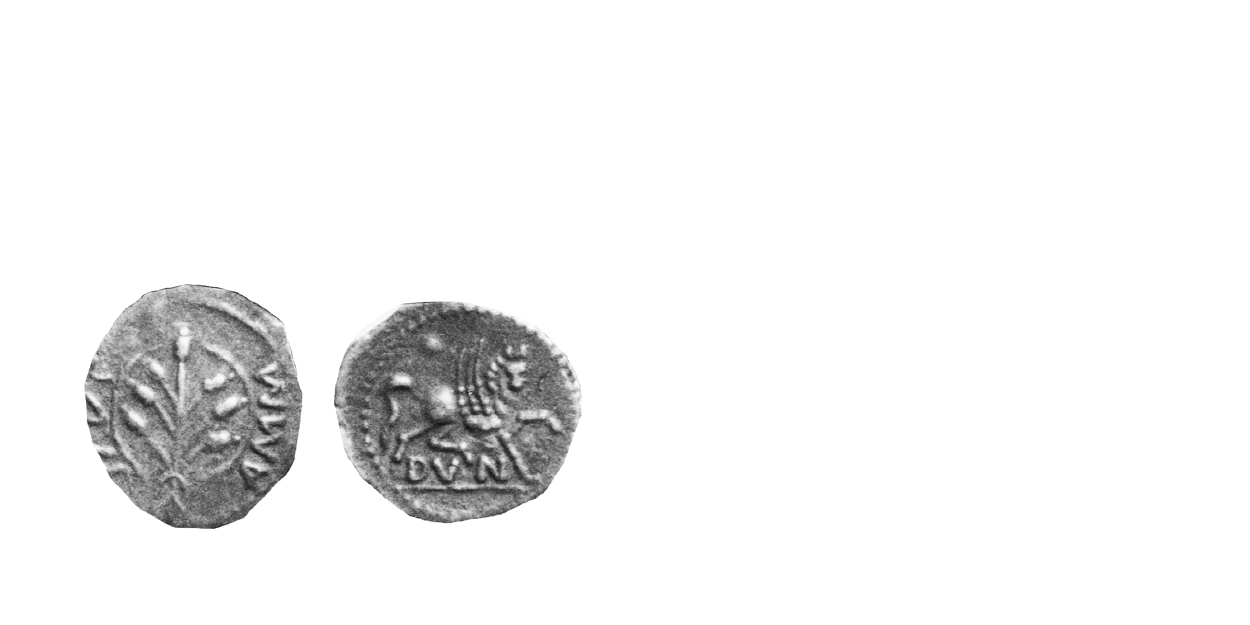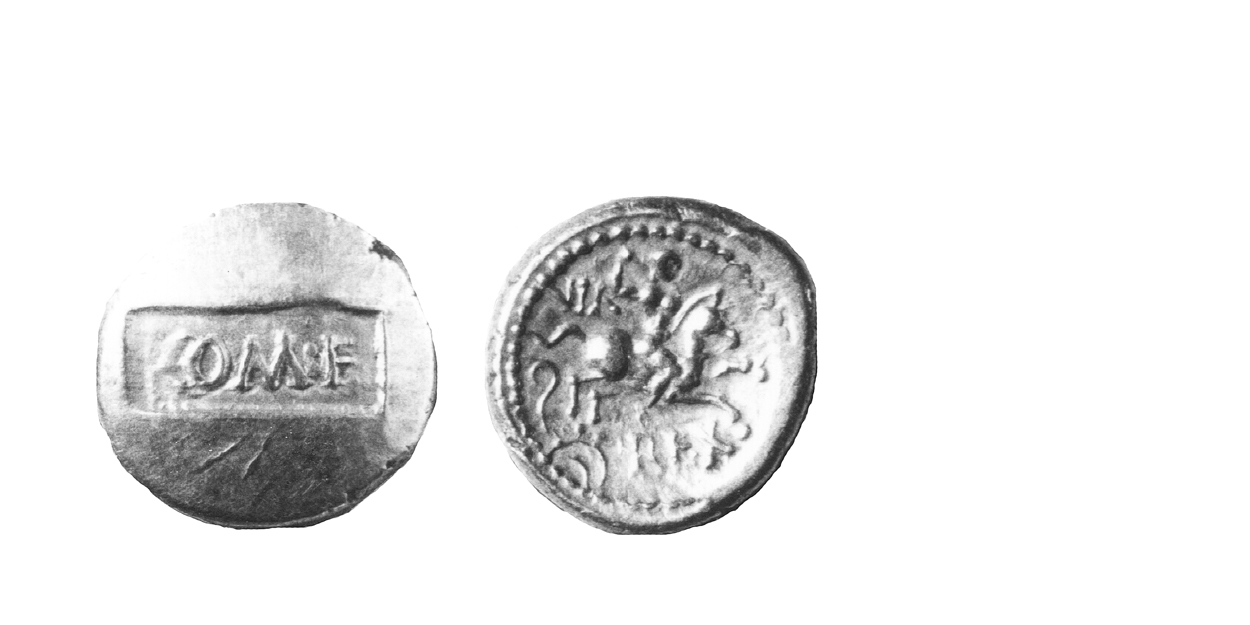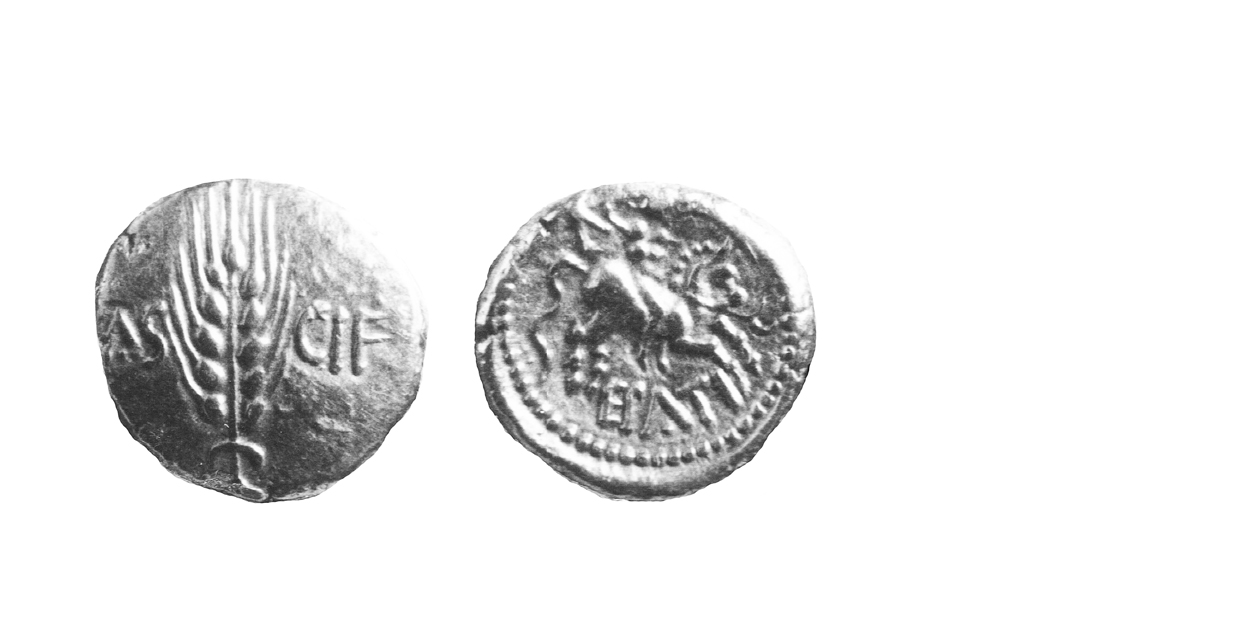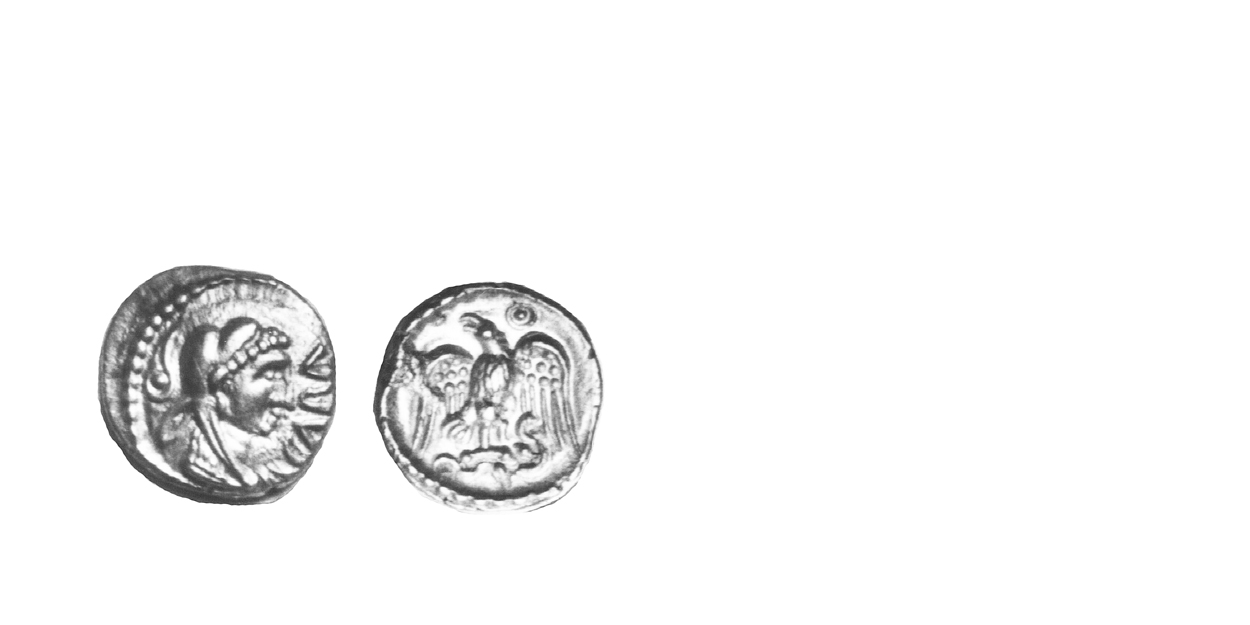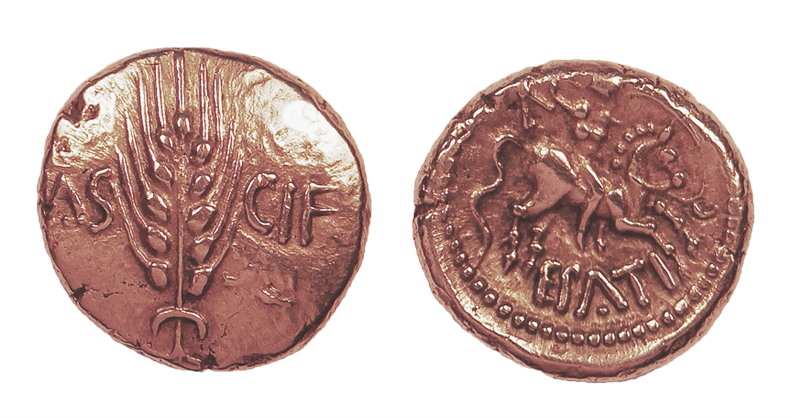
History
Later Coinages (Info)
Coinage in the South Thames Region 10-61 A.D.
Cantii
The Cantii disappear from numismatic history after the accession of Cunobeline, with the exception of a rare Cantian series struck just before the Claudian invasion. For most of the period, Cunobeline's coins circulated in Kent, emphasizing the loss of Atrebatic/Regnan/Belgic influence in the region after 7 A.D.
About 35 A.D., silver and bronze coins with the inscription AMM appeared in Kent and shortly after this, Adminius, a son of Cunobeline fled to the Continent after having a quarrel with his father. The arrival of Adminius in Gaul prompted the Roman Emperor Caligula to prepare an invasion of Britain. This was doomed never to take place. The subsequent events were distorted in the historical record by Caligula's enemies. Apparently, the Romans were sufficiently concerned about Trinovantian/Catuvellaunian expansion by 39 A.D. to prepare for an invasion. The "AMM" of the coins and the son of Cunobeline were likely the same person.
Atrebates/Regni/Belgae
The numismatic record of the Atrebates/Regni/Belgae is more complex. After 10 A.D., Eppillus disappeared and a new ruler, Verica, styling himself "REX" replaced him. The Atrebates/Regni/Belgae had lost their influence in Kent by this time and Verica's coins did not circulate there (78). Possibly Cunobeline orchestrated Verica's accession or alternatively Eppillus disappeared as a direct result of Cunobeline's reassertion in Kent, with Verica merely filling the vacancy in the Atrebatic/Regnan/Belgic leadership.
Verica's coins displayed the same Roman influences that had characterized those of Tasciovanus prior to the Interregnum. It is possible the Romans, fearing Trinovantian/Catuvellaunian expansion, increased their contact with the Atrebates/Regni/Belgae to balance the power of the two tribes. Verica eventually fell prey to Trinovantian/Catuvellaunian expansion – the coins of an encroacher appeared in the northern part of his territory about 35 A.D.
The encroacher, Epaticcus, styled himself a son of Tasciovanus as did Cunobeline. The obverses of Epaticcus' staters were copied from Cunobeline's, but the reverses were inspired by those of Verica. It seems a Trinovantian/Catuvellaunian nobleman was appealing to the Atrebatic/Regnan/Belgic populace by continuing their reverse types, at the same time proclaiming affiliation with Cunobeline. The Atrebates/Regni/Belgae later supported the Romans during the Claudian invasion, perhaps as a result of the encroachment of Epaticcus.
Verica was deposed and fled to the Continent by 42 A.D., prompting the Claudian invasion the following year. Epaticcus disappeared about the time of the invasion and his silver coins were replaced by identical types, now carrying the inscription "CARA". This man was undoubtedly the historical Caratacus, who lead the British resistance during the Roman invasion. Caratacus' coinage would have been curtailed by his capture in 51 A.D. and probably ended much earlier because he was a fugitive for the latter part of the forties.
Next Section – Later Coinages – Peripheral region

